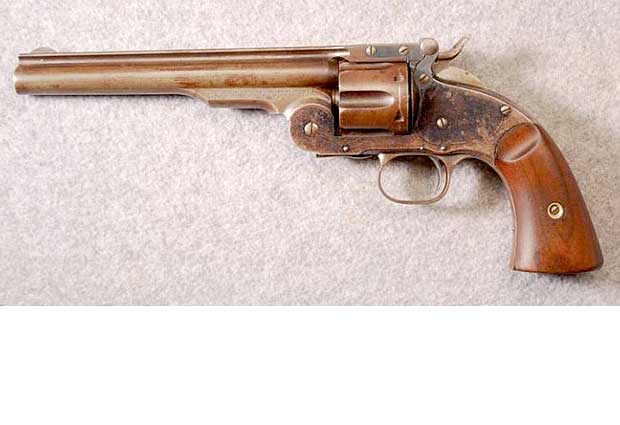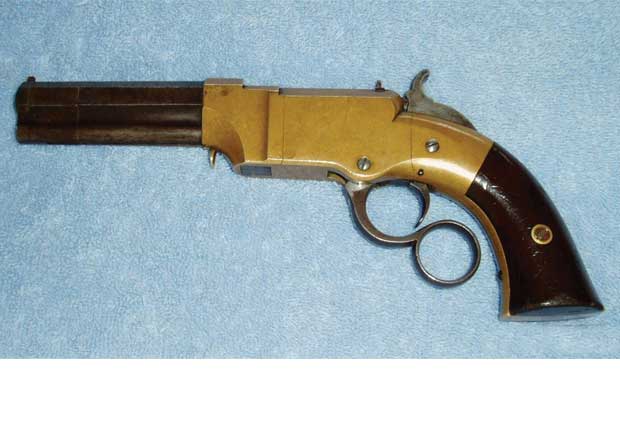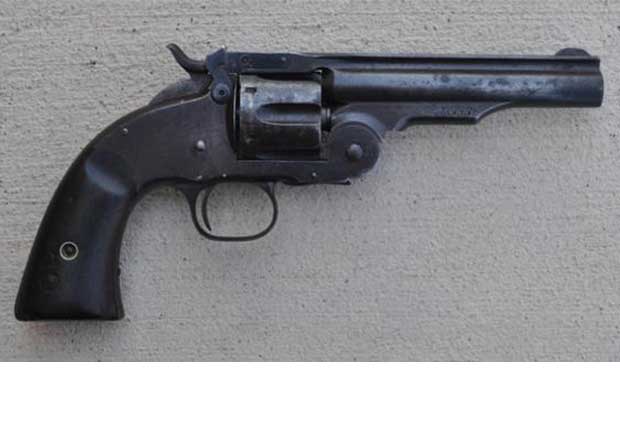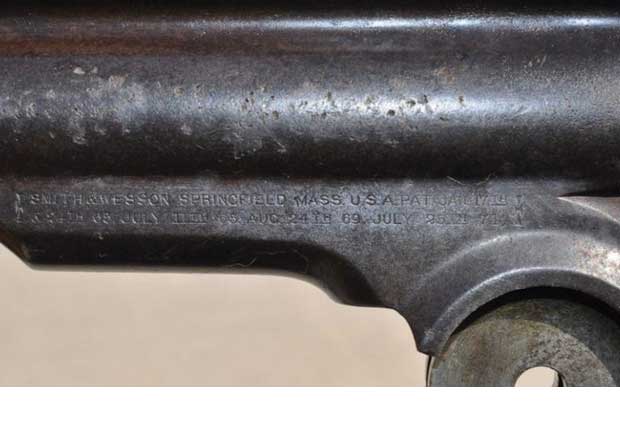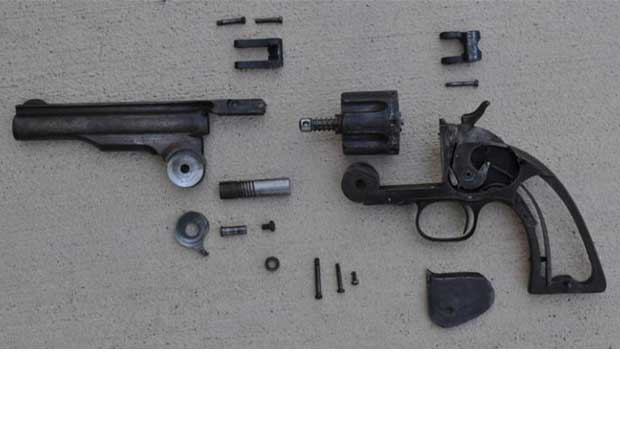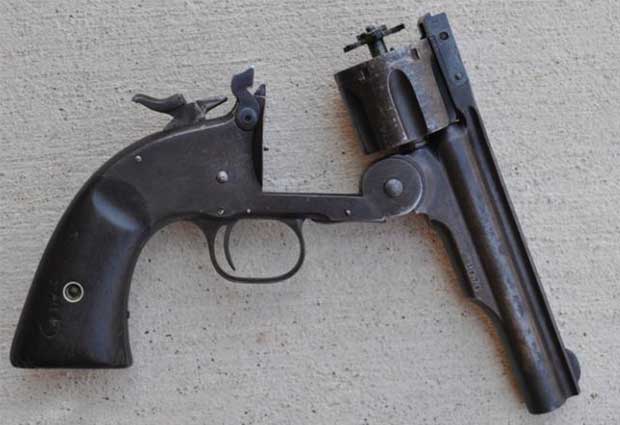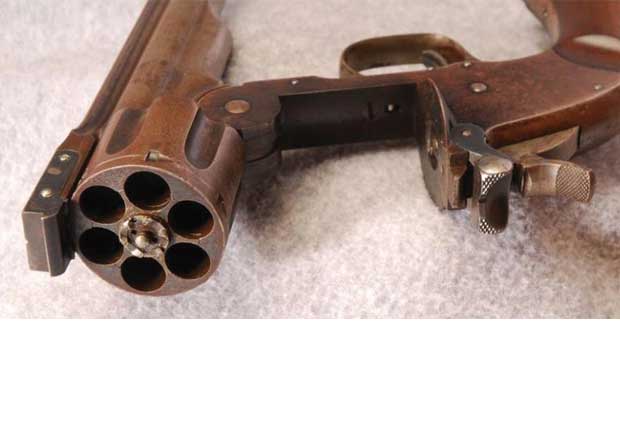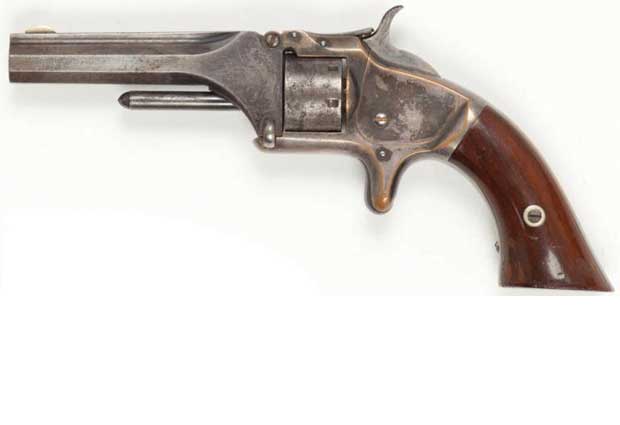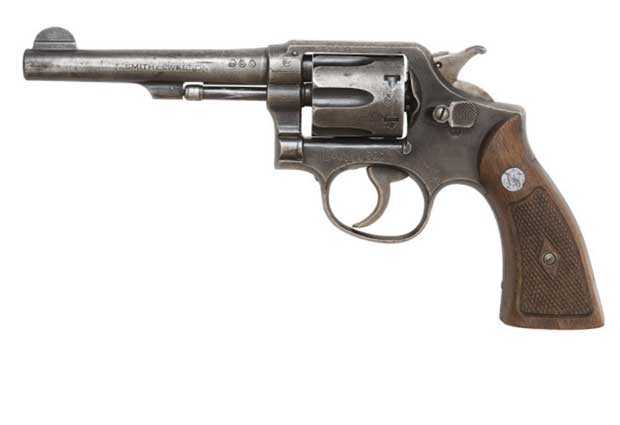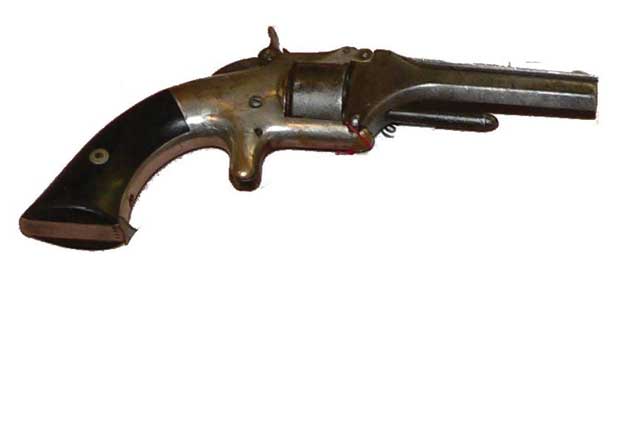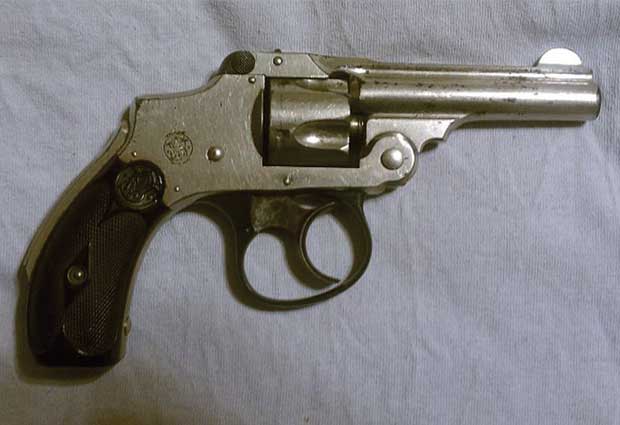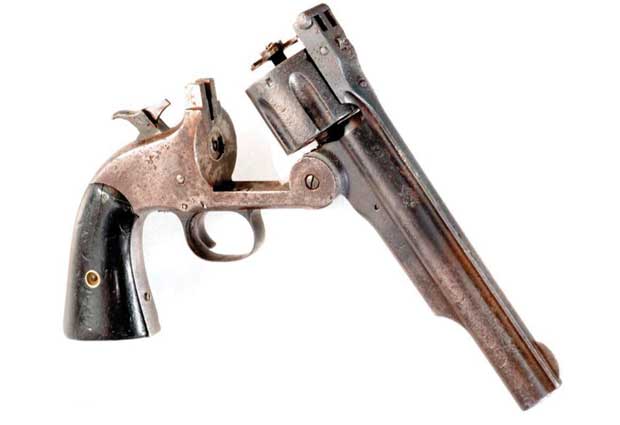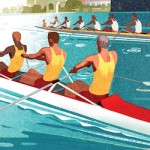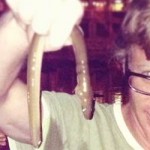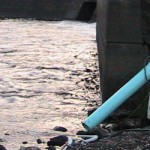This story is part of an ongoing series of stories that first appeared in Arkansas Wild, published by Arkansas Times, Inc., and is available on newsstands in Central Arkansas. You can order your FREE copy of the next issue of Arkansas Wild as an ebook from Sporting Life Arkansas today. We expect the issue to be ready by the end of February, and we will deliver it to you via email. To order, click here or on the Arkansas Wild icon within this story.
LeMasters’ Antique News Service
By Larry LeMasters
Smith & Wesson (S&W) revolvers have long been the preferred side arm of police and military units world wide. Smith & Wesson also produced the most famous revolver ever seen in a movie—the Smith & Wesson Model 29 used by Inspector “Dirty” Harry Callahan.
Clint Eastwood made Inspector Callahan and his .44 Magnum Smith & Wesson famous in the 1971 movie Dirty Harry. Smith & Wesson first produced a .44 Magnum in 1955, designating it Model 29 in 1957. The Model 29 is a six-shot, double-action .44 Magnum revolver, most commonly with an 8 ½ inch barrel. Eastwood made the pistol famous when he pointed it at a bank robber, telling him it was a “.44 Magnum, the most powerful handgun in the world, and would blow your head cleeeeean off.” Not surprisingly, sales for the Model 29 jumped drastically following the release of Dirty Harry.
In 1852, Horace Smith and Daniel B. Wesson formed the Volcanic Repeating Arms Company in order to produce a lever-action pistol nicknamed the “Volcanic pistol.” Two advantages the Volcanic pistol had was rapid rate of fire and its ammunition was waterproof. However the “Rocket-ball” ammunition used by the Volcanic pistol was too underpowered to be considered a hunting weapon or a true, man stopper.
Not long after founding their company, financial problems forced Smith & Wesson to relinquish control of the company to Oliver Winchester, majority investor. Smith & Wesson continued working for Winchester until 1856 when they left the Volcanic Repeating Arms Company and opened a new company—Smith & Wesson.
 The success of Smith & Wesson was assured when the partners purchased the rights to exclusively use Rollin White’s newly designed revolver and cartridge. White, a gunsmith, held the only patent on a bored through cylinder revolver and self-contained metallic cartridge. This new revolver became known as Smith & Wesson Model 1. For more than a decade, Smith & Wesson was the sole manufacturer of this type of revolver, and with the beginning of the Civil War only five years later, Smith & Wesson made a proverbial fortune selling its improved Model 2.
The success of Smith & Wesson was assured when the partners purchased the rights to exclusively use Rollin White’s newly designed revolver and cartridge. White, a gunsmith, held the only patent on a bored through cylinder revolver and self-contained metallic cartridge. This new revolver became known as Smith & Wesson Model 1. For more than a decade, Smith & Wesson was the sole manufacturer of this type of revolver, and with the beginning of the Civil War only five years later, Smith & Wesson made a proverbial fortune selling its improved Model 2.
In 1867, Smith & Wesson started a global sales campaign, introducing its revolvers and patented ammunition to new countries, such as Russia. The Smith & Wesson Model 3 became known as the “Russian Model” and was a favorite weapon of American Lawman Wyatt Earp. The Model 3 was later adapted by the US Army and became known as the “Schofield,” a weapon that helped settle the West. Like the other Smith and Wesson Model 3s, Schofields were also popular with lawmen and outlaws in the American West, and were reportedly used by Jesse James, John Wesley Hardin, Pat Garrett, Theodore Roosevelt, Virgil Earp, Pancho Villa, Billy the Kid, and many others.
Most gun enthusiasts want a .44 Magnum but Smith & Wesson collectors would much rather have a Schofield or an early Volcanic pistol. But wanting and affording, at least for collectors, are often bi-polar conditions.
The simplest truth is that, outside of museums, one sees few Volcanic Repeating Arms pistols offered for sale. The odds of ever owning one is not good, but if you are truly interested, you should check premium gun auctions around the country. Recently, a “small frame” Volcanic pistol, .31 caliber, was offered for sale at GunsAmerica.com for $9,500. According to GunsAmerica, only 850 of these small frame, lever action pistols, were manufactured between 1857 and 1960, making this a Winchester Volcanic pistol since Smith & Wesson left the company in 1856.
On the other hand, owning a genuine S&W Schofield only requires money. Lots of money. Recently Cabelas Fort Worth offered an 1876-77 S&W .45-caliber Schofied with a 7-inch barrel and walnut grips for $7,000.
GunsInternationl.com, an excellent online site for gun collectors, offered an S&W Model 3 (the First model) Schofield for $6,050. This single action revolver was stamped “Wells Fargo & Co. Express,” had a five-inch barrel, and was .45 caliber. According to the website, “After the Spanish American War in 1898, the US Army sold off all their surplus Schofield revolvers. The surplus Schofield revolvers were reconditioned by wholesalers and gunsmiths (at professional factory-quality level) with a considerable number offered for sale on the commercial market with a 5-inch barrel as well as the standard size barrel of 7-inches. Of the most notable purchasers of these reconditioned model 3 Schofield revolvers was Wells Fargo and Company, who purchased the revolvers for use by Wells Fargo Road Agents and had the barrels shortened to a more concealable 5 inch length. These revolvers were then inspected by a Wells Fargo armorer and uniquely stamped “W.F. & CO. EX.” or “Wells Fargo & Co”, along with the original Smith & Wesson serial number re-stamped alongside the Wells Fargo stamping on the flat part of the barrel just forward of the barrel pivot.”
The Civil War Period produced a great demand for Smith & Wesson products. The Smith & Wesson No. 2 Army revolver had a 6-inch octagon barrel and six cylinders. When found in above average or excellent condition, these S&W Army No. 2s are valued at about $900 – 1,000.
Two other S&W revolvers that greatly interest collectors are the 1857 Model 1, second issue .22-caliber rimfire and the 1899 S&W .38-caliber military and police revolver. The 1857 Model 1 is a beautiful pistol that truly represent the earliest days of .22-caliber production. Collectors who favor .22s always search for Model 1 S&Ws. The 1899 Special Model .38 was equipped with a special hand ejector and was the first .38 revolver to use S&W .38 Special cartridges.
Many antique S&W revolvers used a spear trigger without a trigger guard. By modern standards, these are considered “unsafe” pistols, but collectors love any pistol with a spear trigger since it not only is old, it is visually appealing.
It has been said that Samuel Colt made all men equal and Winchester was the gun that settled the West, but the truth of these statements has been called into question by the shear number of Smith & Wesson revolvers manufactured from 1856 until 1900 and beyond. S&W revolvers were smaller than the big-handled Colts, and S&W was the first American company to produce a metallic cartridge and bored through cylinder revolver. In short, collectors love Smith & Wesson revolvers because anything that Samuel Colt produced, he did so on the coat tails of Horace Smith and Daniel B. Wesson.


